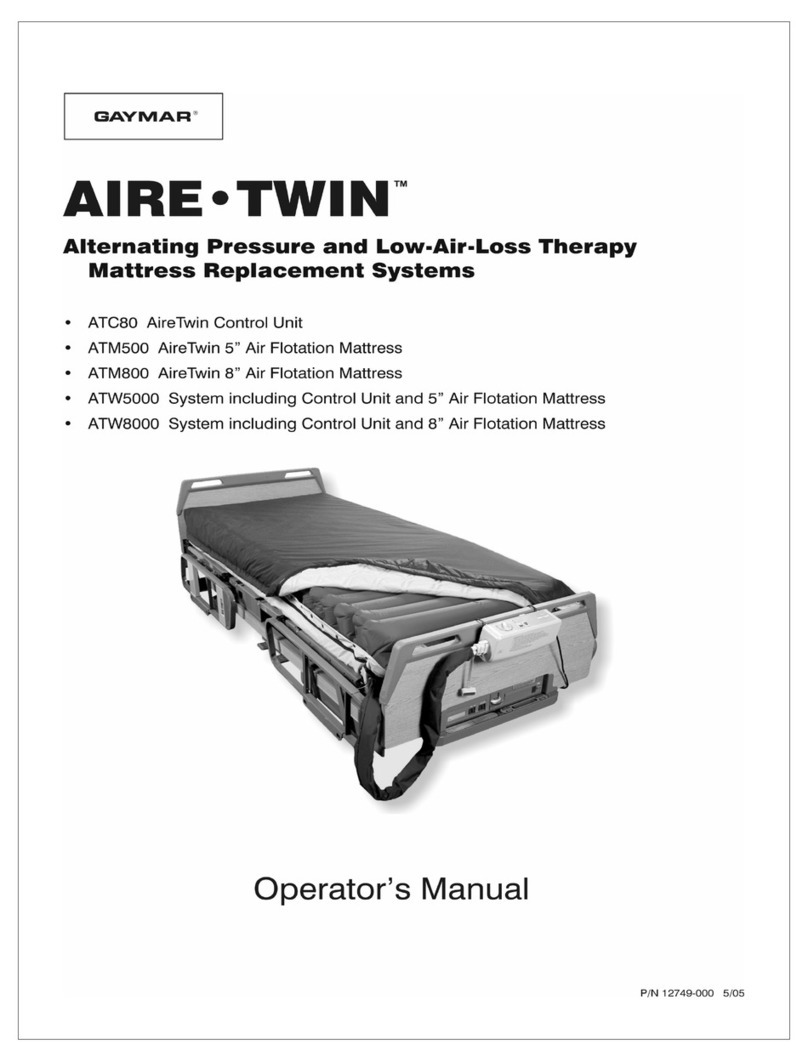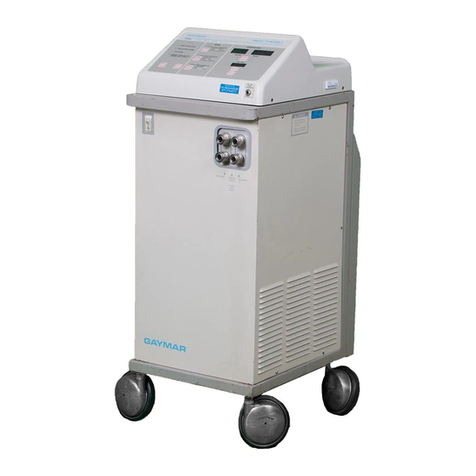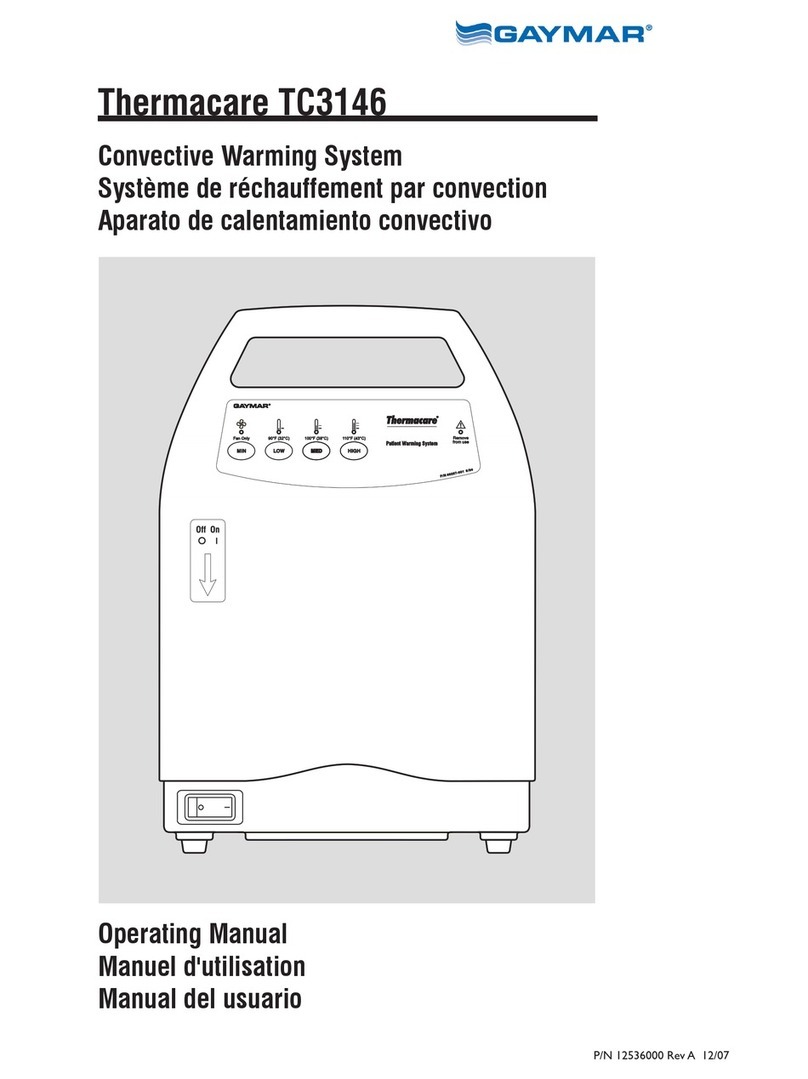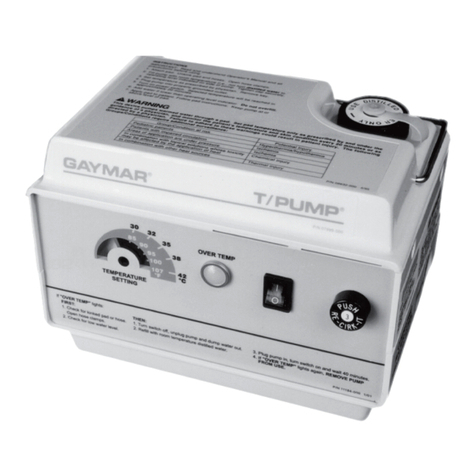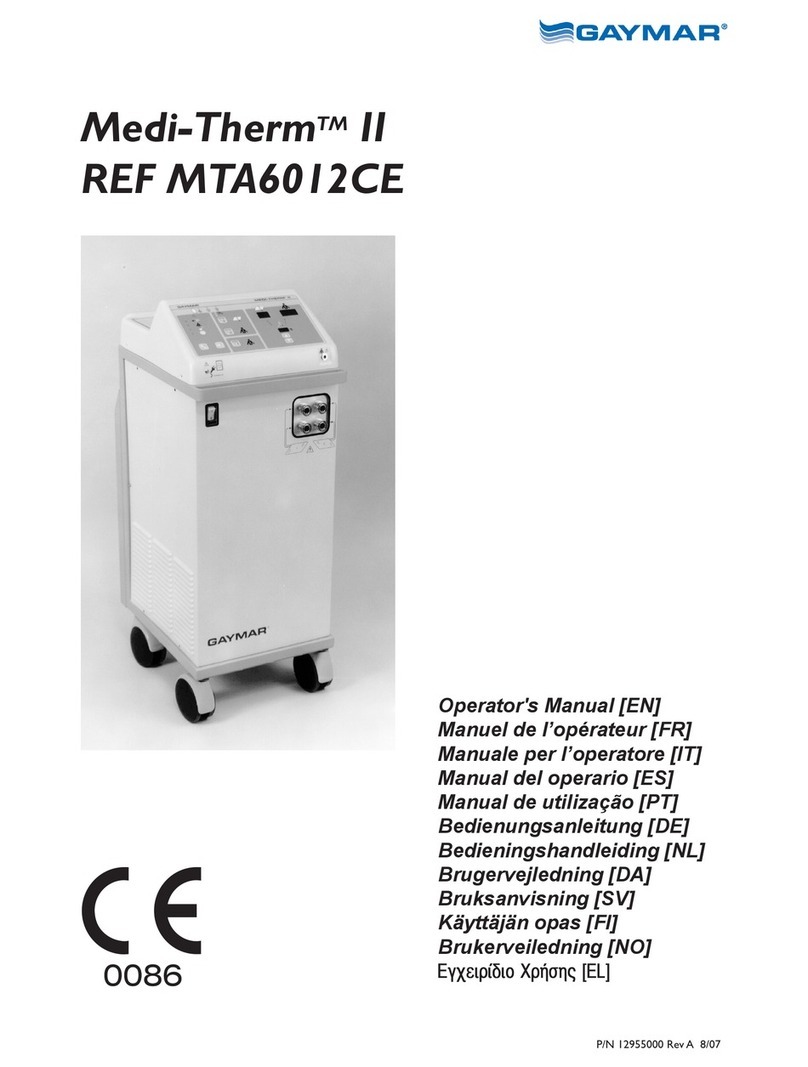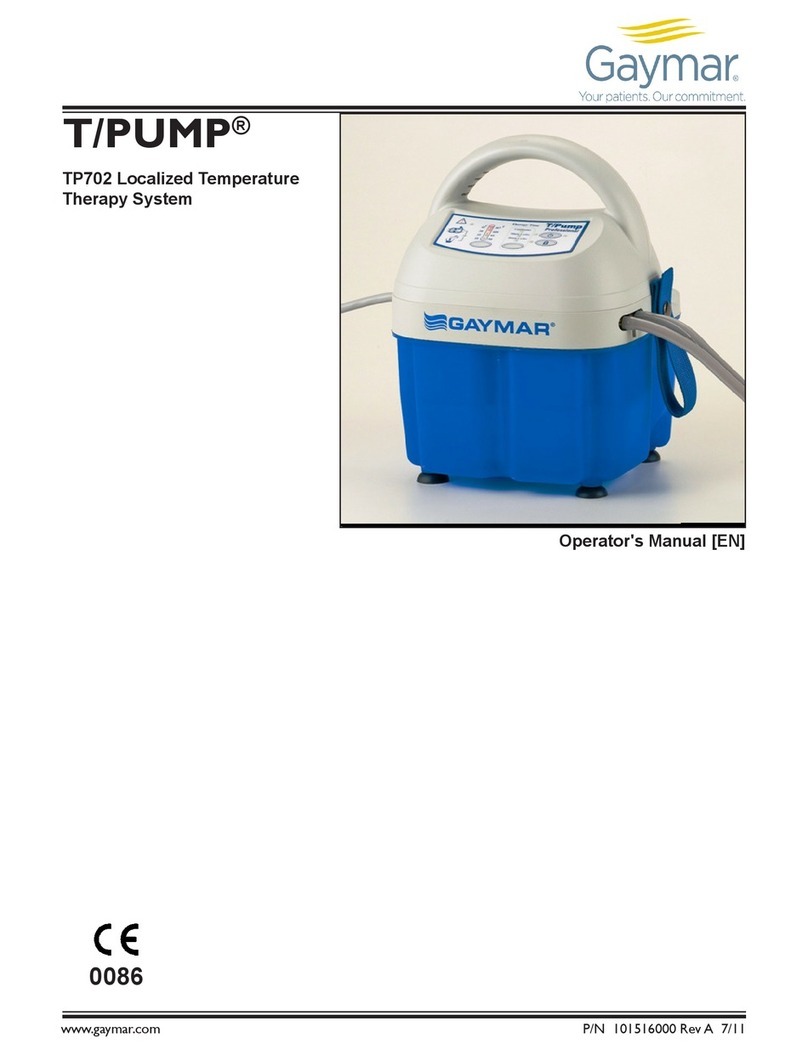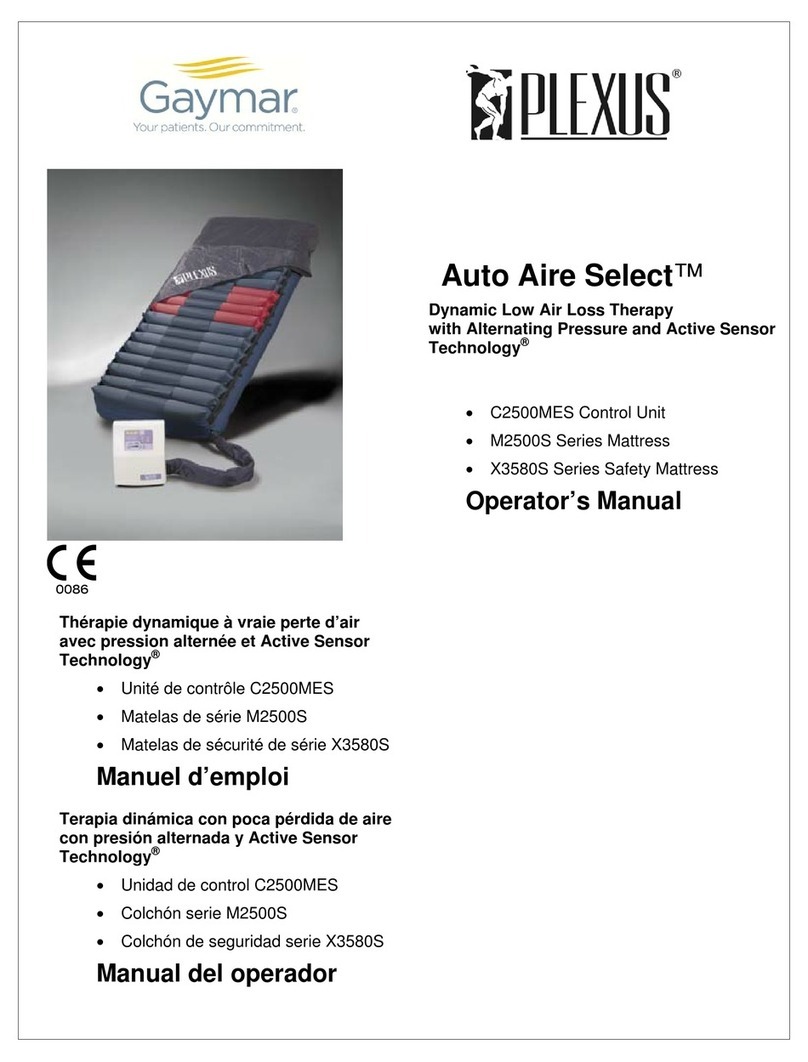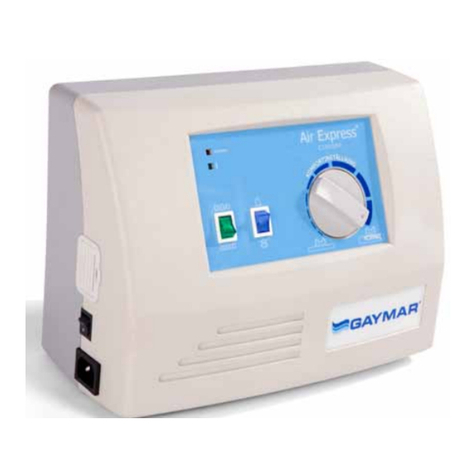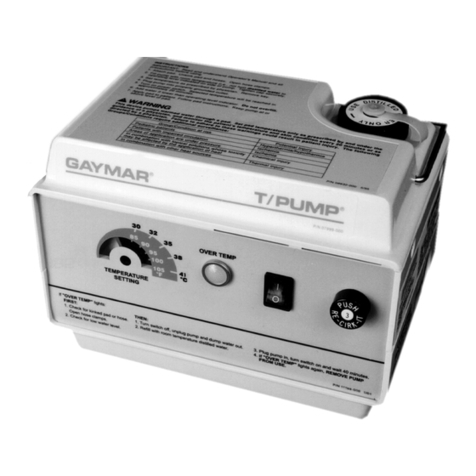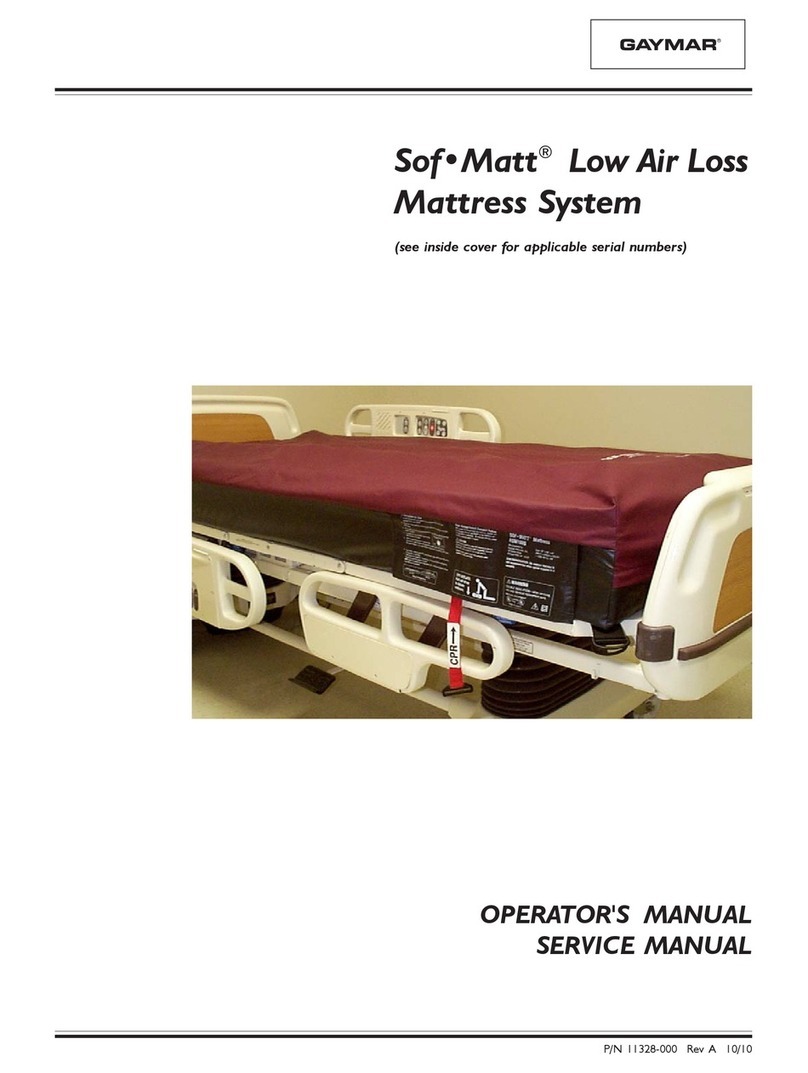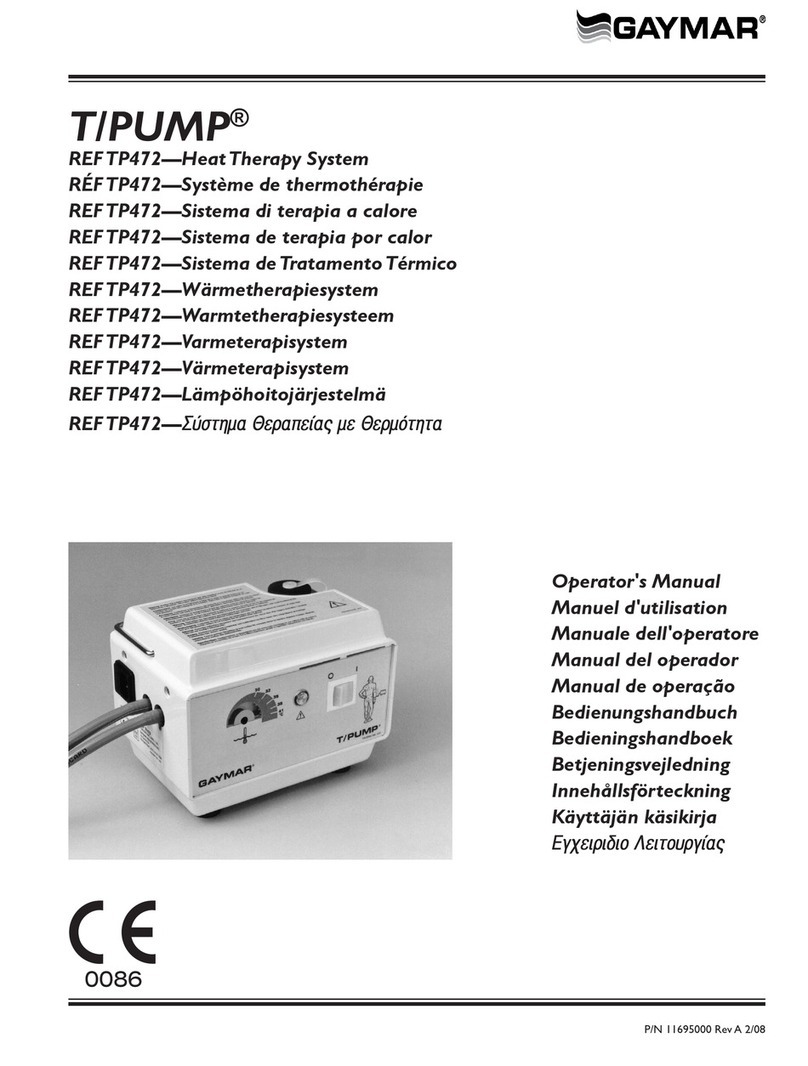Medi-Therm®IIIMedi-Therm®III Start-up Procedure / Shutdown Procedure
SILENCE ALARM button will temporarily
silence the audible alarm for 5 minutes if a
CHECK WATER FLOW condition exists.
5.7 Perform Indicator Light Test
Since machine indicators are essential to proper
machine operation, you should test the indicator
lights each time the machine is placed in operation.
Perform this test by pressing and holding the TEST
LIGHTS button.
While holding the TEST LIGHTS button down, verify
the following occurs:
•the right and left halves of the display panel
light alternately;
•the four status legends (FLOW-OK, HEAT,
IN-TEMP, and COOL) light;
•the ALERT legend and its four (triangular)
indicators light;
•the three mode legends, SELECT heading,
and three AUTO/CONTROL OPTION
legends light;
•the three temperature displays (BLANKET,
PATIENT, and SET POINT) indicate 888,
888.8, and 888.8, respectively;
•the two temperature control legends (°C
and °F)* and the two lines connecting SET
POINT to both the BLANKET and PATIENT
display light;
•the audible alarm sounds.
If any indicator does not light, or the alarm does
not sound, remove the machine from use.
This completes the start-up procedures for the
Medi-Therm III machine. Please proceed to sections
7.0 through 7.3 for the operating instructions for
MANUAL, AUTO and MONITOR modes.
6.0 Shutdown Procedure
When therapy is completed, turn off the Medi-Therm
III machine. Close pinch clamps before disconnecting
the blanket.
*Some models do not have the °C/°Ffeature.
7
5.5 Connect Power/Turn Machine On
If the machine is not already plugged in, insert the
power cord plug into a properly grounded AC receptacle
at this time. Press the ON/OFF Switch to the ON
position.
When rst turned on, the Medi‑Therm III enters its
standby mode:
•the ON/OFF switch will light;
• the machine will beep once;
•the SELECT heading will light;
•the BLANKET, PATIENT, and SET POINT
temperature displays will show dashes; and
•the °C or °F indicator will light, depending on
the scale last selected.*
NOTE: If the ADD WATER indicator lights, add distilled
water until the green band on the oat is visible.
5.6 Check Water Flow Alert
Audible Alarm Preference
The operator can choose whether to have an audible
alarm accompany a CHECK WATER FLOW alert visual
indication (in the event the blanket water ow becomes
restricted). As set from the factory, the visual alert
condition is not accompanied by an audible alarm.
To change the audible preference to ON:
1. Turn the machine off.
2. Press and hold the SILENCE ALARM button.
3. Turn the machine on while continuing to
depress the SILENCE ALARM button for at
least one second.
4. To check audible operation, press the
MANUAL mode button. Bend the blanket
hose (to restrict water ow) until the CHECK
WATER FLOW and ALERT indicators light.
The audible alarm should sound.
The new preference (i.e., audible alarm ON) will be
remembered by the machine even when power is off.
To change the audible preference to OFF again, repeat
steps 1-3 and insure non-operation of the audible tone
using step 4 above.
NOTE: If the audible preference is ON, pressing the
Patient Safety
14
Use the Medi-Therm III Hyper/Hypothermia machine
only under the direction of a physician.
Review the following precautions and procedures
prior to each application:
Do not use the Medi-Therm III machine in the
presence of ammable anesthetics.
Risk of explosion can result.
• If the patient’s temperature is not responding
or does not reach the prescribed temperature
in the prescribed time or deviates from the
prescribed temperature range, notify the
attending physician promptly.
Failure to notify the physician promptly
may result in serious injury or death.
• Power interruption will cause the Medi-
Therm III machine to go into a standby mode,
resulting in no therapy to the patient. Follow
instructions for desired mode to resume
operation.
Failure to resume therapy could result in
serious injury or death.
• The Medi-Therm III machine is provided
with a means of checking rectal/esophageal
temperature probes. When performing the
PROBE CHECK
(p. 18, 10.1.2, item 4), use a disposable
protective sheath on the probe.
Failure to use a sheath could result in
cross-contamination.
• PEDIATRICS - The temperatures of infants
and children are more responsive to surface
heating and cooling than adults. The smaller
the patient, the more pronounced the effect
because of their higher ratio of skin contact
area to body mass.
TEMPERATURE-SENSITIVE PATIENTS
- Patients with impaired peripheral blood
circulation caused by vascular diseases
and patients who are incapacitated may
be more sensitive to temperature changes
than patients with more normal circulation.
OPERATING ROOM PATIENTS - Patients
with poor circulation associated with
inadequate heart function, reduction in
blood volume, and constriction of peripheral
blood vessels may deviate from the normal
response to the external application of heat
and cold.
• Avoid placing additional heat sources
between the patient and blanket.
Skin damage can result.
Heat applied by the blanket can result in
a rise in skin temperature at the areas
of contact. The additional heat rise due
to electrosurgical currents owing to the
dispersive electrode could be sufcient to
cause tissue injury. Each thermal effect
by itself may be completely safe, but the
additive effect may be injurious.1Keep
additional heat sources from between
the patient and the blanket.
• Prevent excessive and/or prolonged tissue
pressure and shearing forces, especially over
boney prominences.
Skin damage may result.
Localized skin injury due to tissue
compressed between boney prominences
and uid lled channels has occurred
during prolonged cardiovascular
procedures at blanket temperatures
well below the scientically established
epidermal burn injury threshold.2
8.0 Patient Safety
(continued next column)
(continued next page)
